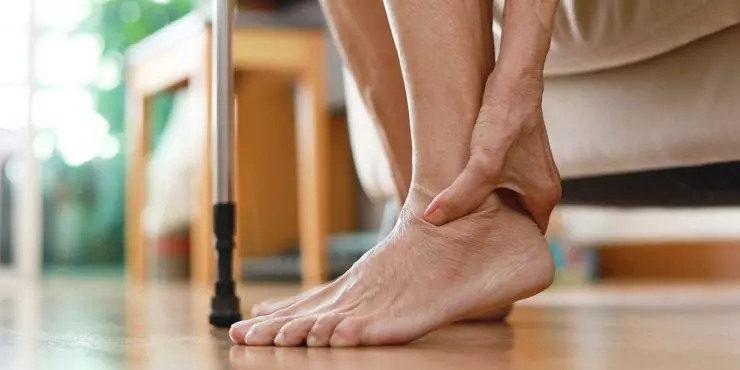
Arthritis and joint pain are common conditions that affect millions of people worldwide. These conditions can range from mild discomfort to debilitating pain, impacting daily life and overall quality of life. Understanding the causes, types, and available treatment options is crucial for effectively managing arthritis and joint pain.
What is Arthritis and Why Does Joint Pain Occur?
Arthritis is not a single disease but a broad term that encompasses over 100 different conditions affecting the joints, the tissues surrounding the joints, and other connective tissues. The most common types of arthritis include osteoarthritis, rheumatoid arthritis, and gout.
- Osteoarthritis is the most prevalent form, often referred to as "wear and tear" or degenerative arthritis. It occurs when the protective cartilage that cushions the ends of your bones wears down over time, leading to pain, swelling, stiffness, and reduced joint mobility.
- Rheumatoid arthritis is an autoimmune condition where the body’s immune system mistakenly attacks the lining of the joints, causing inflammation, pain, and potentially joint deformity if left untreated.
- Gout is a type of arthritis caused by the accumulation of urate crystals in the joints, leading to sudden and severe pain, often in the big toe (or other single joint that is used a lot), along with redness and swelling.
Joint pain in arthritis occurs due to inflammation, damage to the joint structures (such as cartilage, ligaments, and bone), and sometimes due to the body’s immune response. The severity of the pain can vary depending on the type of arthritis, the joints affected, and the overall progression of the disease.
Medication Options for Managing Arthritis
Medications play a crucial role in managing arthritis and alleviating joint pain. The choice of medication depends on the type of arthritis, the severity of symptoms, and the patient’s overall health.
- Nonsteroidal Anti-Inflammatory Drugs (NSAIDs): NSAIDs like ibuprofen and naproxen are commonly used to reduce inflammation and alleviate pain. These medications are effective for short-term relief, particularly in osteoarthritis and rheumatoid arthritis.
- Corticosteroids: These powerful anti-inflammatory drugs, such as prednisone, can be taken orally or injected directly into the affected joints. Corticosteroids provide fast relief from inflammation and pain but are generally used for short-term management due to potential side effects with long-term use.
- Disease-Modifying Antirheumatic Drugs (DMARDs): DMARDs, such as methotrexate, are used primarily in rheumatoid arthritis to slow disease progression and prevent joint damage. They work by modulating the immune system to reduce inflammation.
- Biologic Response Modifiers: These are a newer class of DMARDs that target specific components of the immune system. Biologics, like adalimumab (Humira) and etanercept (Enbrel), are often used when traditional DMARDs are not effective.
- Pain Relievers: Acetaminophen is commonly used for pain relief, particularly in osteoarthritis. While it does not reduce inflammation, it can help manage pain without some of the gastrointestinal side effects associated with NSAIDs.
- Topical Medications: Creams, gels, and patches containing NSAIDs, capsaicin, or lidocaine can be applied directly to the affected joints for localized pain relief.

Surgical Options for Severe Cases
When arthritis progresses to the point where medication and lifestyle changes are no longer effective, surgery may be considered to relieve pain and restore function.
- Joint Replacement Surgery: This is the most common surgical option for severe arthritis, particularly in the hip and knee. In a joint replacement, the damaged joint surfaces are removed and replaced with artificial implants made of metal, plastic, or ceramic.
- Arthroscopy: This minimally invasive procedure allows the surgeon to diagnose and treat joint problems through small incisions. Arthroscopy is often used to remove or repair damaged cartilage and other joint tissues.
- Joint Fusion: In cases where joint replacement is not an option, joint fusion may be performed, particularly in smaller joints like those in the hands, feet, and back. This procedure involves removing the damaged joint and fusing the bones together, which can relieve pain but results in reduced joint mobility.
- Osteotomy: In this procedure, the surgeon reshapes the bones to relieve pressure on the joint. Osteotomy is often used in younger patients with knee osteoarthritis to delay the need for joint replacement surgery.
Natural and Lifestyle Approaches to Managing Arthritis
In addition to medication and surgery, there are several natural and lifestyle approaches that can help manage arthritis and joint pain.
- Physical Activity: Regular exercise is one of the most effective ways to manage arthritis. Low-impact activities like swimming, cycling, and walking can strengthen the muscles around the joints, improve flexibility, and reduce pain. Stretching exercises and yoga can also help maintain joint mobility.
- Weight Management: Maintaining a healthy weight is crucial, particularly for individuals with osteoarthritis. Excess weight puts additional stress on weight-bearing joints like the hips and knees, exacerbating pain and joint damage.
- Diet: A balanced diet rich in anti-inflammatory foods, such as fruits, vegetables, whole grains, and fatty fish, can help reduce inflammation and support overall joint health. Omega-3 fatty acids, found in fish oil, have been shown to reduce inflammation in rheumatoid arthritis. Checkout our article on the Mediterranean diet, as it can be described as the “one size fits all” diet.
- Heat and Cold Therapy: Applying heat can help relax muscles and relieve stiffness, while cold therapy can reduce swelling and numb pain. Alternating between heat and cold can be particularly effective in managing arthritis symptoms.
- Supplements: Some supplements, such as glucosamine and chondroitin, are commonly used to support joint health, although evidence of their effectiveness is mixed. Fish oil supplements, rich in omega-3 fatty acids, have been shown to reduce inflammation and pain in rheumatoid arthritis. Always consult your doctor before including supplements into your diet. It’s important to remember that supplements are not regulated by the FDA.
- Stress Management: Chronic pain can take a toll on mental health, leading to stress and anxiety, which can, in turn, exacerbate pain. Mindfulness practices, such as meditation and deep breathing exercises, can help manage stress and improve overall well-being.
- Physical Therapy: Working with a physical therapist can provide personalized exercises and techniques to improve joint function, reduce pain, and enhance mobility.
- Acupuncture: This traditional Chinese medicine practice involves inserting thin needles into specific points on the body. Some studies suggest that acupuncture can help reduce pain and improve function in people with arthritis, although more research is needed to confirm its effectiveness.
- PRP: Platelet Rich Plasma is extracted from a patient’s own blood and then injected into their affected arthritic joint. Evidence is mixed on its effectiveness, however there is some research showing a reduction in pain and stiffness and improvement in mobility and function of the joint over time.
Step One, Talk to Your Doctor
Managing arthritis and joint pain requires a multifaceted approach tailored to the individual’s type of arthritis, the severity of symptoms, and their overall health. While medications and surgery can provide significant relief, natural and lifestyle approaches play a crucial role in long-term management and improving quality of life.
It’s essential for individuals with arthritis to work closely with their healthcare provider to develop a comprehensive management plan that addresses their unique needs and helps them maintain an active, fulfilling life despite their condition.